Sunny Beach or Zadar? The cheap European destinations that are actually worth visiting
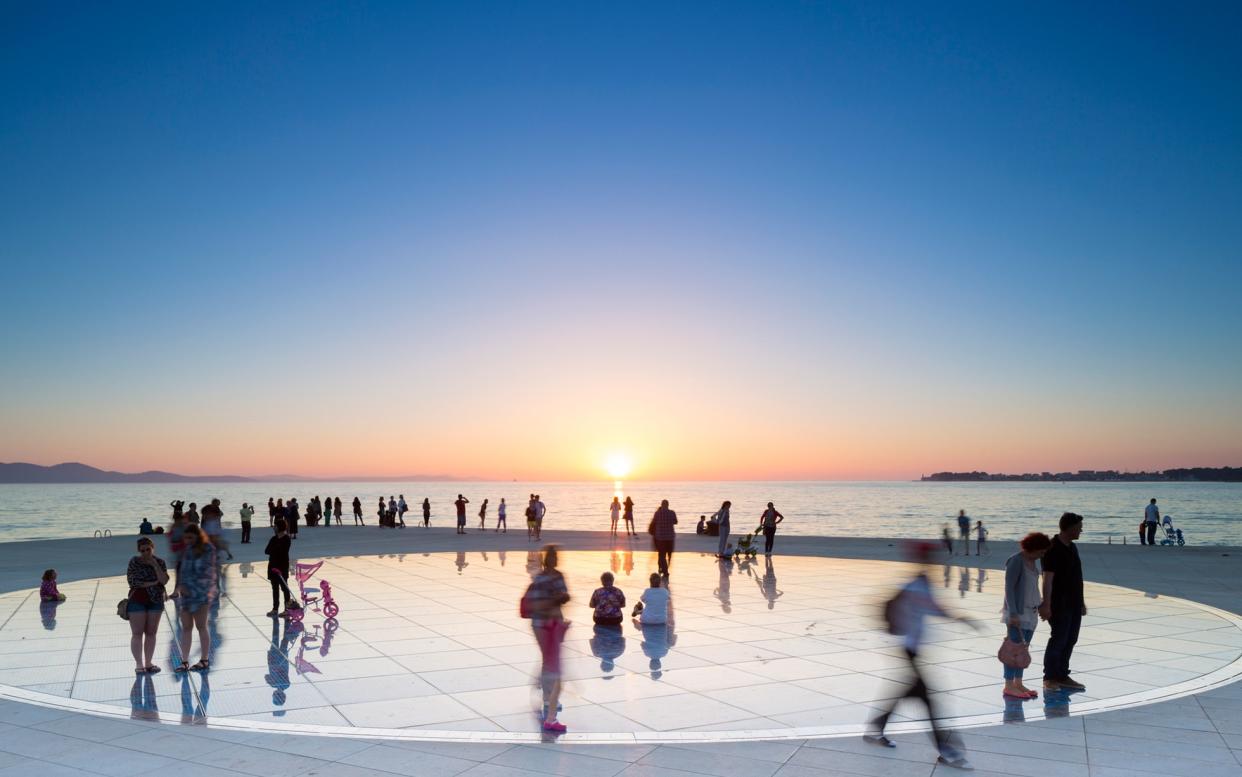
There are several signs that spring is getting into gear - the growing number of flowers, the hint of fragrance on the air, a slowly noticeable increase in warmth (although not this week). And the release of the Post Office's annual "Holiday Costs Barometer", which takes the financial temperature of beach-break hotspots across continental Europe, and works out where British travellers' money will stretch furthest in the coming summer.
It is a straight-forward but invaluable tranche of research, which assesses the cost of a sojourn in 18 different destinations by comparing them on the combined cost of nine holiday essentials.
These are: a cup of coffee in a cafe; a bottle of local beer in a bar; a bottle of Coca-Cola in a cafe; a glass of wine in a bar; a 1.5-litre bottle of mineral water in a supermarket; a bottle of suncream; a bottle of insect repellent; a two-course restaurant lunch for two people, minus drinks; a three-course dinner for two with wine.
The results are not exactly surprising. Of the 18 selected locations, the Black Sea resort of Sunny Beach, in Bulgaria, is - for the fifth year running - the best value (with lunch for two reckoned to cost £8.56, and a total amount for the nine items calculated to be £43.44). There is no shock here. Bulgaria's east flank has long been one of Europe's cheapest corners, and its continued existence outside the Eurozone (the currency is still the Lev, which floats at about 2.25 to the pound) means that this situation is unlikely to change.
The more intriguing detail is that Marmaris, in second place, is awarded a nine-essentials total of £56.88 - a meagre sum which reflects the Turkish lira's current exchange rate, down 25 per cent, year-on-year, against sterling.

Turkey has had its political troubles in the last couple of years, and the hard-line policies of President Erdogan may make some travellers think twice about going. But money talks, and the low outlay required for a week in the likes of Marmaris or Bodrum is also sure to be enticing.
"This may be the year when it will pay to plan a trip outside the Eurozone," says Andrew Brown of Post Office Travel Money. "There have already been reports of growing demand for Turkey, as low-priced packages attract cash-conscious UK holidaymakers. A combination of the Turkish lira's weakness, and low prices, will make resorts like Marmaris even more attractive to holidaymakers on a tight budget."
Beyond the Lev-and-Lira twosome at the bottom of the poll, the study picks out travel hotspots in Portugal, Spain, Greece, Cyprus, Croatia, Malta, France and Italy. The charms of the destinations at the "expensive" end of the results (such as Italy's Amalfi-Coast siren Sorrento, Spain's Balearic beauty Ibiza and France's Cote D'Azur queen Nice) need little explanation - but the appeal of the places in the "lower" half of the list, where cheapness is more of a factor than culture or cool-factor, just might.
Below, we look at five of the 18 destinations where the cost of the survey's nine essentials tallies up at under £100 - and explain what you can expect of your value for money.
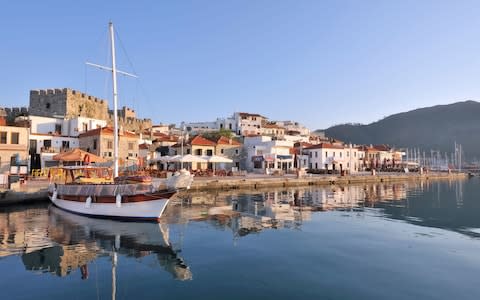
Marmaris (Turkey)
Nine essentials total: £56.88
Pro: Some of the most reliable weather anywhere within a four-hour flight of the UK - you can expect temperatures which sizzle in the low Thirties during July and August.
Con: Turkey has been wrestling with security issues and political turbulence - although the Foreign and Commonwealth Office (FCO) has (almost) no qualms about British travellers paying a visit. Latest details at gov.uk/foreign-travel-advice/turkey.
Something to see: Marmaris National Park (nationalparksofturkey.com/marmaris-national-park), and the ancient ruins around its perimeter - including the glorious remnants of Erine (in modern-day Hisaronu), a Lycian city where buildings are still hewn into cliff-faces in a similar manner to Petra, but with far fewer admiring tourists.
Further information:gototurkey.co.uk
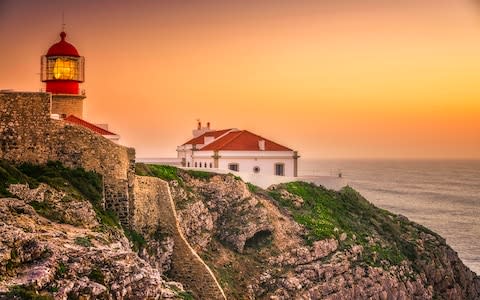
The Algarve (Portugal)
Nine essentials total: £68.24
Pro: The same time-zone as the UK. No need for even the most minor case of jet-lag.
Con: Portugal's most southerly region is enormously busy in July and August. If you are seeking somewhere with quiet corners and hidden places in summer, go elsewhere.
Something to see: Sagres, the dramatically beautiful town at the very south-west tip of the Portuguese landmass. The 16th century fortress which adorns Sagres Point is a sturdy stronghold, its cannons still watching the ocean for enemy sails on the horizon.
Further information:visitalgarve.pt; visitportugal.com
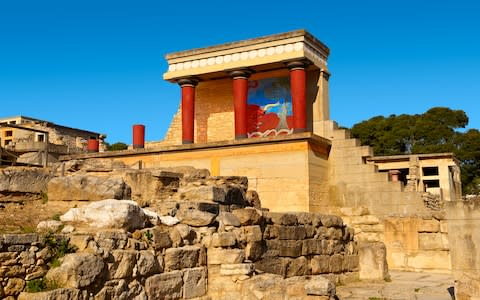
Crete (Greece)
Nine essentials total: £81.35
Pro: The biggest of the Greek islands is a place equipped for endless explorations. You could spend a month here without really retracing your steps, and if you want to hike or bike as well as doze on the beach, you have enough rugged terrain for a lifetime of wandering.
Con: None, really - although you may be caught out by a lengthy transfer. Crete is over 200 miles long from east to west. Check the distance from the airport to your hotel.
Something to see: The ruins of ancient Knossos - an archaeological site with A-list mythological cachet. It was here, Greek legend has it, that the Athenian prince Theseus fought and killed the (half-man-half-bull) Minotaur in the labyrinth of King Minos.
Further information:incrediblecrete.gr; visitgreece.gr
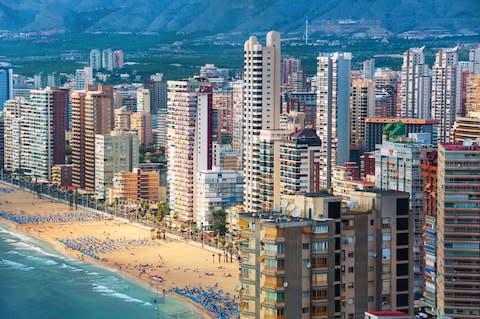
Costa Blanca (Spain)
Nine essentials total: £83.58
Pro: Familiar terrain. British tourists have been enjoying Spain's south-eastern shoreline - to be specific in this case, the 120 miles between Denia in the north and Pilar de la Horadada in the south - for the best part of 50 years. This will not change, whatever the exchange rate.
Con: Familiar terrain. How much you might enjoy a week on the Costa Blanca will depend entirely on your opinion of resort areas such as Benidorm and Alicante.
Something to see: Denia, with its 11th century castle pitched high on its crag, offers a decidedly pretty and less crowded version of the Costa Blanca holiday experience.
Further information:costablanca.org; spain.info
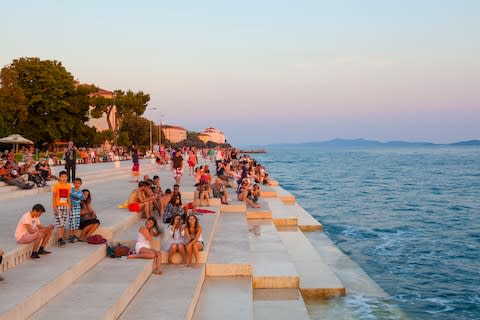
Zadar (Croatia)
Nine essentials total: £98.13
Pro: The joy of being able to combine a beach holiday with an air of intrepidness. Zadar is scarcely an unknown dot on the European map - but, pitched halfway up Croatia's Adriatic coastline, it is still significantly less known than Dubrovnik. Croatia also is also another EU country which stands outside the Eurozone. It uses the kuna.
Con: A relative lack of air-lift. Neither British Airways not Croatia Airlines fly to the city from the UK (although easyJet and Ryanair both offer seasonal services).
Something to see: The city itself. Zadar revels in that photogenic orange-roofed haze which defines many parts of Croatia. Kolovare Beach, close to the centre, is lovely.
Further information:zadar.travel; croatia.hr


